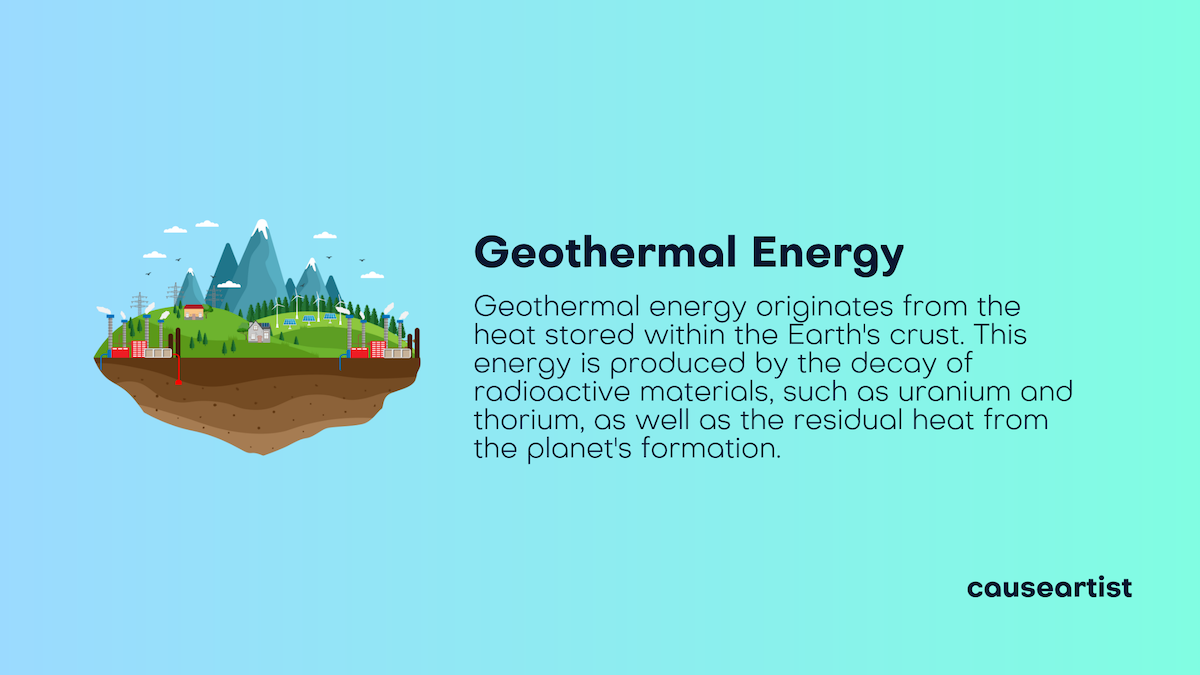Geothermal energy originates from the heat stored within the Earth's crust. This energy is produced by the decay of radioactive materials, such as uranium and thorium, as well as the residual heat from the planet's formation.
It manifests naturally in the form of hot springs, geysers, and volcanic activity. By tapping into this heat, we can generate electricity, heat buildings, and power industrial processes.
How Does Geothermal Energy Work?
Geothermal energy systems utilize the Earth's heat in various ways:
- Direct Use: Using hot water from geothermal reservoirs for bathing, heating buildings, or industrial processes.
- Geothermal Power Plants: These plants use steam from deep within the Earth to drive turbines and generate electricity. Common types include:
- Dry Steam Plants: Using direct steam to turn turbines.
- Flash Steam Plants: Extracting high-pressure hot water that flashes into steam.
- Binary Cycle Plants: Transferring heat to a secondary fluid with a lower boiling point to generate electricity.
The Benefits of Geothermal Energy
Geothermal energy stands out for its numerous advantages:
- Sustainability and Renewability: Unlike fossil fuels, geothermal resources are naturally replenished, ensuring a steady energy supply.
- Environmental Friendliness: Geothermal energy produces significantly lower greenhouse gas emissions compared to coal or natural gas.
- Base Load Power Supply: It provides a consistent and reliable energy output, unaffected by weather or seasonal changes.
- Cost-Effectiveness: After initial investment, operating costs for geothermal systems are low due to minimal fuel requirements.
- Energy Independence: Countries can reduce reliance on imported fuels by harnessing their geothermal resources.

Applications of Geothermal Energy
Geothermal energy is versatile and can be used in various sectors:
- Electricity Generation: Large-scale geothermal plants supply electricity to grids worldwide. For example, Iceland generates nearly 25% of its electricity from geothermal sources.
- Heating and Cooling: Geothermal heat pumps provide efficient climate control for homes and businesses by leveraging the Earth's constant underground temperature.
- Agriculture: Greenhouses heated by geothermal energy enable year-round cultivation of crops.
- Industrial Processes: Geothermal energy powers processes such as food drying, pulp production, and desalination.
Challenges in Geothermal Energy Development
While promising, geothermal energy faces several challenges:
- High Initial Costs: Exploration and drilling to locate geothermal reservoirs require substantial investment.
- Geological Risks: Not all regions have accessible geothermal resources, and resource depletion can occur if not managed sustainably.
- Environmental Concerns: Drilling and extraction can cause land subsidence and release trace amounts of greenhouse gases.
- Technological Barriers: Developing efficient and affordable extraction technologies remains a hurdle.
Geothermal Energy Around the World
Countries like Iceland, the Philippines, Kenya, and the United States lead in geothermal energy utilization. These nations demonstrate how strategic investment and resource management can maximize the benefits of this renewable energy source.
Iceland, for instance, uses geothermal energy for both electricity generation and heating, significantly reducing its carbon footprint.
Future Prospects for Geothermal Energy
Advancements in technology and growing environmental awareness are driving geothermal energy innovation. Enhanced Geothermal Systems (EGS), which involve artificially creating reservoirs in hot dry rock, could unlock new geothermal potential.
Additionally, integrating geothermal with other renewables like solar and wind could create hybrid systems that enhance energy reliability.







